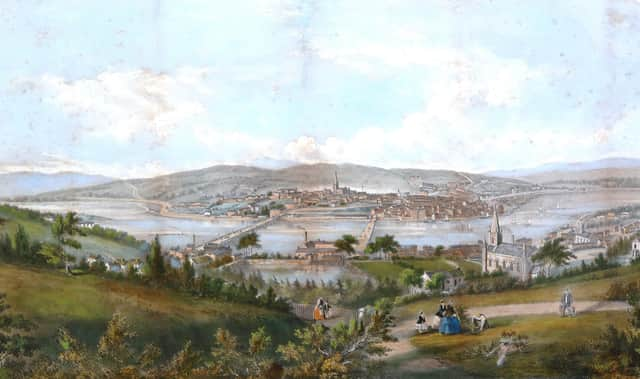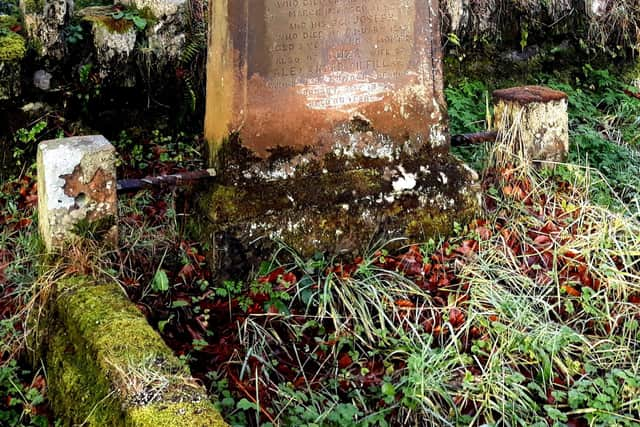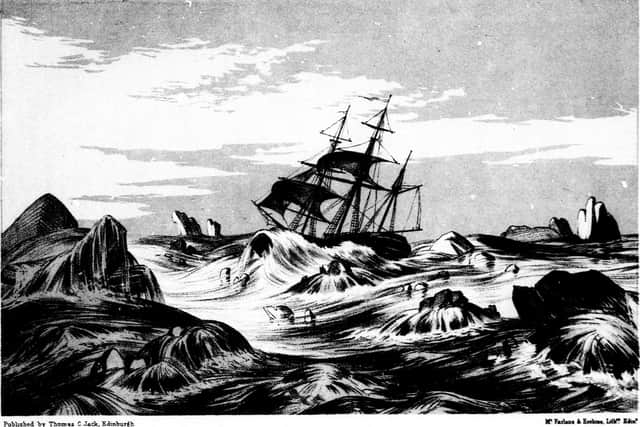The surgeon, the North Pole and a weird secret about the ‘wood of life’


An ancient graveyard at Enagh Lough just outside Derry holds a mystery.
Here, in an overgrown plot, lies at rest a local surgeon who sailed the seas with a world-famous explorer but returned to Derry a broken man. Strange to relate, on one of his voyages he learned something that he would never reveal to anyone and, in the end, he literally took his secret to his grave.
Advertisement
Hide AdAdvertisement
Hide AdBut, now, after years of research, clues have been uncovered that might hold the key to one of the north west’s great riddles.


On a balmy afternoon in the year 1830, there was the usual frenzy as a newly arrived cross-channel schooner tied up at the quayside in Derry. Curious onlookers eyed those disembarking and saw one man who stood out above the others. He was tall, rather haggard-looking, moved with difficulty and, despite the pleasant weather, he wore a top hat, a scarf and greatcoat. Strange as this was, his most distinguishing feature was the black patch over one eye.
The traveller was 37 years old Alexander Gilfillan, a naval surgeon, who had returned to Derry after years at sea. Indeed, to be more precise, he was on his way to his father’s home at Gorticross, just a few miles from the city. It did not take a genius to see that Gilfillan was ill. As if to prove the point, he snapped impatiently at the deck hands dealing with his luggage, a surgeon’s trunk and an odd-looking bundle of deep-brown wooden planks, which appeared to be very heavy.
For clues to this strange tale, we have to visit the leafy little graveyard of Enagh at Judge’s Road. Here a large gravestone records that this is Alexander Gilfillan’s last resting place: died March 27, 1838, aged 45. But what follows really catches the eye, for the reader is informed that Gilfillan sailed as a surgeon with the great Sir John Franklin on his voyage of discovery to the Arctic. A further rather curious line adds that Alexander Gilfillan died at Gorticross on the same day as his father, Joseph.
Advertisement
Hide AdAdvertisement
Hide AdAlexander Gilfillan was born at Gorticross in 1793 and, at the age of 15, persuaded his parents to let him take up Latin lessons with the hope of eventually becoming a doctor. By 1813, Alexander had completed initial medical training and joined the Royal Navy with the rank of assistant surgeon. He proved to be an excellent doctor and, within a few years, his skills were impressing his navy bosses. As a reward, in 1818, he was offered the post of assistant surgeon on HMS Trent which was to undertake a great voyage of discovery to the North Pole. The Trent was to be commanded by the famous explorer, Sir John Franklin, in company with another vessel, the HMS Dorothea.


Unfortunately, the expedition turned out to be a catastrophe. Both vessels were almost wrecked near the Arctic Circle in a series of massive ice storms. To make matters worse, Gilfillan himself began to lose his sight due to snow blindness, a condition little understood in those days. And, while some vision returned, initial reports indicated that his eyes were irreparably damaged.
It seems that, from then on, Gilfillan’s life saw nothing but misfortune. True, he was appointed to the rank of full surgeon in 1822 at the age of 29. Yet he was barely in the post when the sight went permanently from one eye. Following this, the navy temporarily invalided him out on half pay and reluctantly he made his way home to Derry to recuperate.
The navy, however, refused to discharge him and, in a rather cynical move, in November 1827 posted him to the naval hospital in Kingston, Jamaica. He spent two miserable years here - a broody, disillusioned character with a patch over one eye.
Advertisement
Hide AdAdvertisement
Hide AdOften his fellow officers chided him for refusing to take alcohol but, in time, like many others, he became addicted to drink. In the end, his health broke down completely and, all too late, the navy released him. By now, he was an alcoholic and a shadow of his former self.
This then was the Alexander Gilfillan who alighted on Derry quay in that summer of 1830, after his journey from the West Indies. About a year later, now aged 37, he married Elizabeth McCutcheon, the daughter of a local farmer. Their happiness was short-lived as their first child was scalded to death at three years of age when a pot of boiling water tipped over him. The child’s death had a devastating impact on Gilfillan whose drinking was now out of control.
Gradually, his intemperate ways took their toll. While his wife continued to manage the home patiently, his ageing father condemned his son’s behaviour outright. The story goes that, one day after his father had chided him, Gilfillan, now deeply depressed and obsessed with death, roared back angrily: ‘Listen, old man! You see that white horse out there in the farmyard? One day soon it will draw both our coffins to the graveyard!” Gilfillan’s prophecy came true. Father and son died on the same day and were buried together on the same day - and the white horse did, indeed, draw them to Enagh graveyard.
It is in connection with his death that one intriguing mystery still surrounds Gilfillan. Not long before he died, he summoned the local carpenter to his barn and instructed him to make a coffin from the bundle of wooden planks he had brought back from Jamaica eight years earlier. Gilfillan said the wood was very special and carried a secret he would not reveal. From research, we now know the wood was lignum vitae - quite literally the wood of life. Probably the toughest wood known, it is so dense it will not float and so hard it can be used for engine parts. It is also believed to have many curative qualities. Water will not penetrate this amazing wood.
Advertisement
Hide AdAdvertisement
Hide AdSince Gilfillan chose a coffin of lignum vitae, we must assume that, for some reason, he wanted to be buried in a watertight casket, perhaps with some sort of embalming effect. Why this should be, we shall never know for this is the secret he took to his grave.
When his wife died, almost 60 years later, the Enagh grave was opened once more. The coffin was said to be in magnificent condition - as new as the day it went in - not a blemish, not the slightest sign of any decay, clean and bright-looking, just as if it had been interred that very instant.